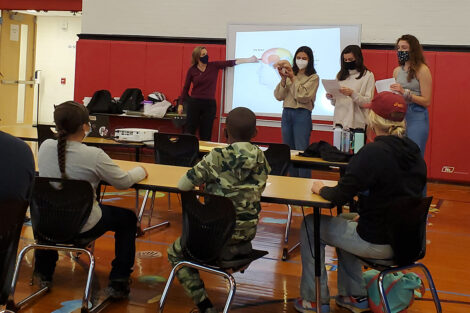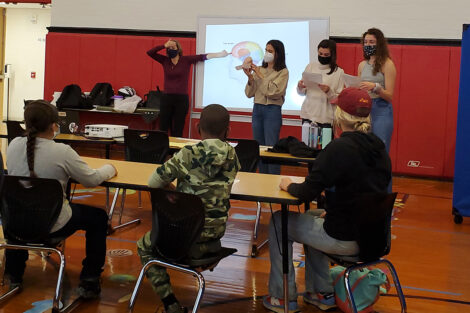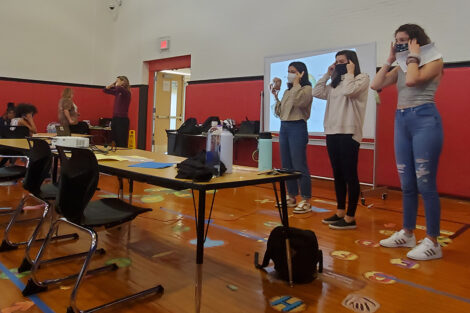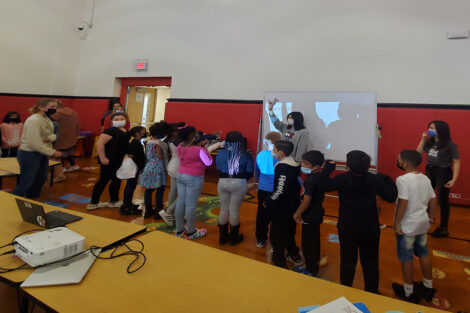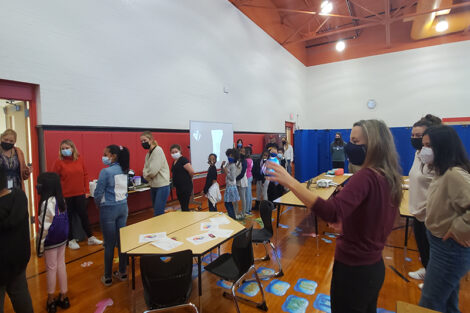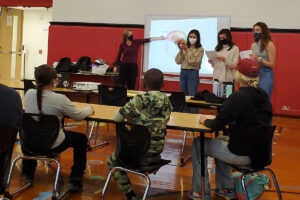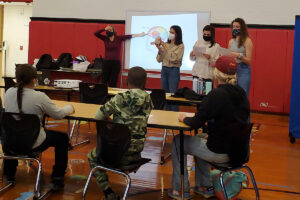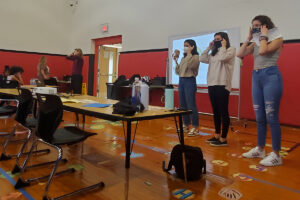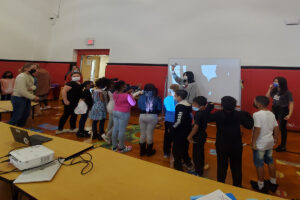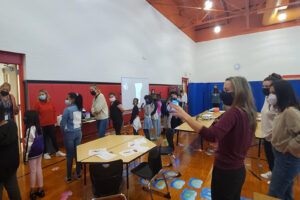Connected Classrooms: Advanced Neuroscience
Lisa Gabel, professor and chair of neuroscience, and students in her Advanced Neuroscience Capstone course joined Tina Joynes’ third-grade class at Paxinosa Elementary as part of Landis Center for Community Engagement’s Connected Classrooms initiative.
Concepts covered:
- Neuroanatomy: The main parts of the brain, including the frontal, temporal, parietal, occipital lobes, and cerebellum
- Locating and identifying the main functions of each part of the brain
- The functions each part of the brain is responsible for, such as processing sound or emotion
Feedback from Lafayette students:
“To many people, 20 third graders raising their arms and shouting ‘PERSONALITY’ is a cute, terrifying, or simply confusing sight. For myself and Autumn Paone ’22 and Sydney Appel ’22, it is a Thursday morning in Advanced Neuroscience. After several days of research and practice, we had the opportunity to visit Paxinosa Elementary and teach third grade students about the different brain regions. As these students have not taken science this year, we wanted to keep our mini-lesson straightforward but engaging and fun, prompting students to develop an interest in neuroscience.
“Our presentation consisted of talking the students through different brain lobes and their functions using physical handouts, actions such as touching their heads, and a 3D model. Then, we adapted a beloved children’s game, ‘Simon Says,’ replacing the typical actions with brain regions and key words. As a senior in college, I have completed my fair share of group projects. Rarely have I enjoyed my group, the project itself, and the project outcomes as much as this service-learning project. Furthermore, I greatly enjoyed interacting with the students at Paxinosa. They were curious, smart, and shocked to discover that the 3D model was exactly how their own brains look! I further benefited by learning how to talk about complex topics in simple terms and improving at group work, which is important for my career goals.” –Natalie Schmit ’22
“This project has helped me better appreciate how, if broken down in the right ways, very complex material cannot only be explained to these young students, but they can actually understand it. Considering this is mainly material that I was introduced to in college, it is extremely impressive to me that these students were able to follow along with the information and activities, especially considering that they are not learning any science at the moment. It was also really interesting to see the other groups’ approaches to their content and how we were all able to make the complex information engaging and digestible.” –Libby Mayer ’22
